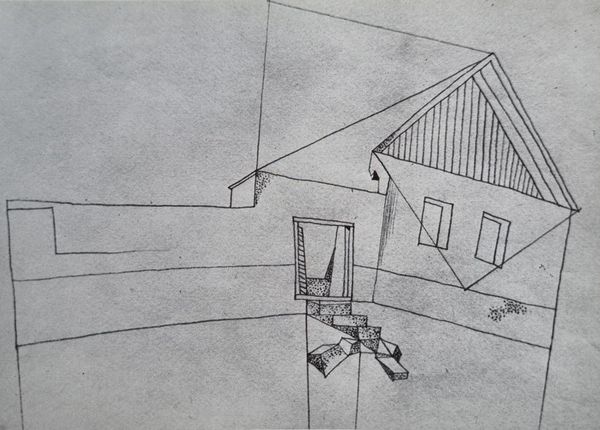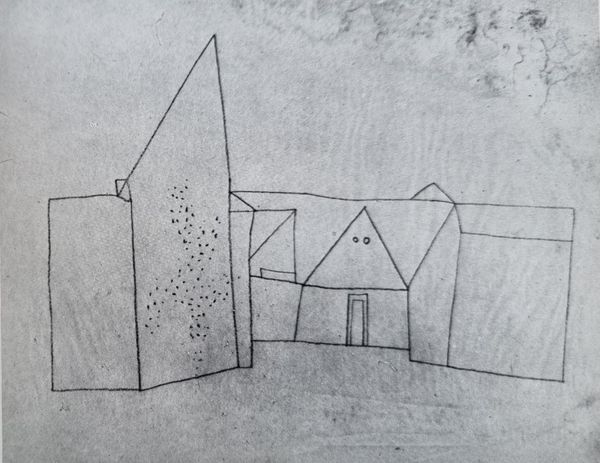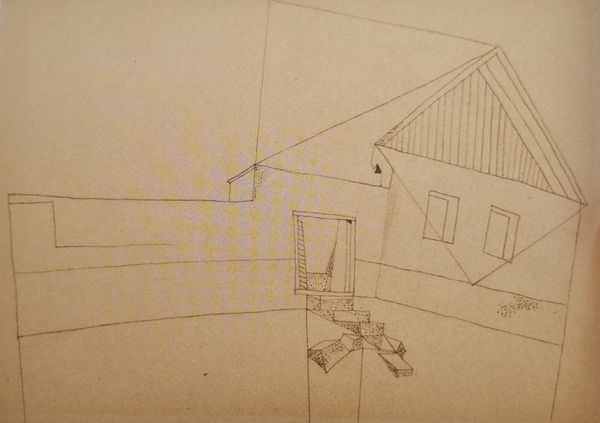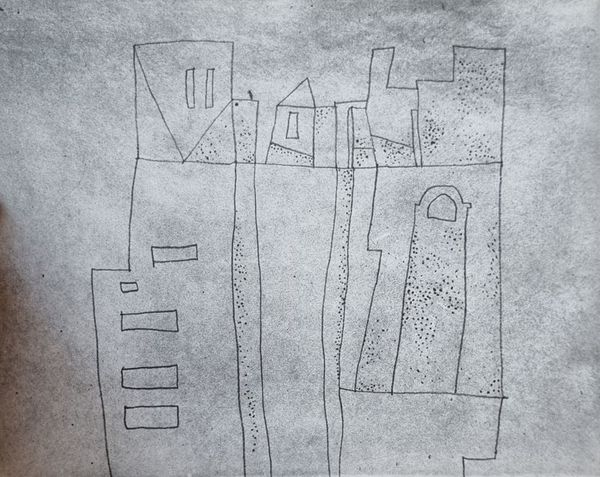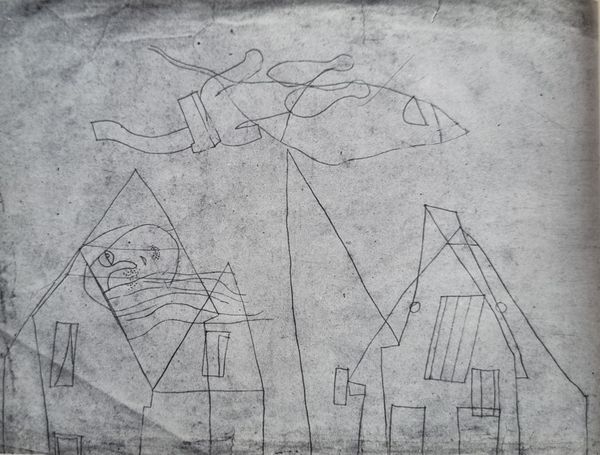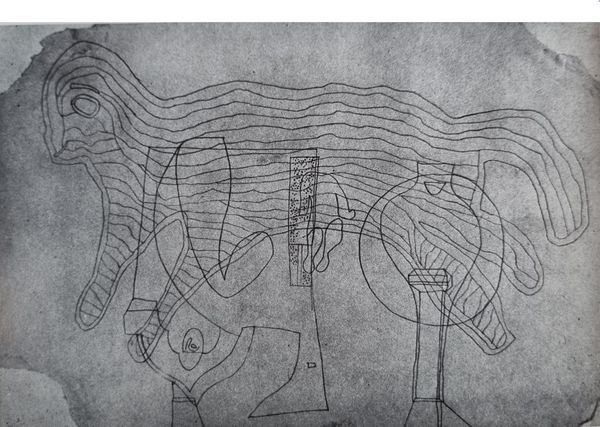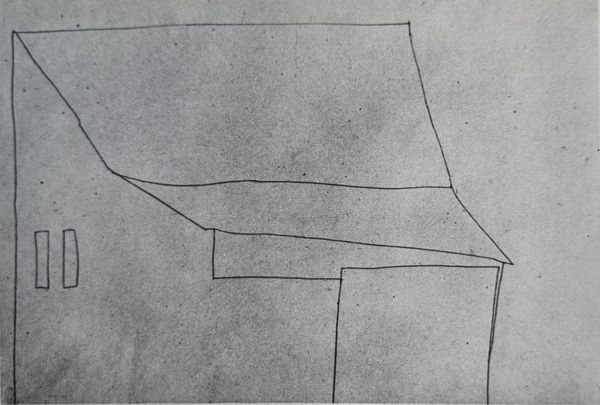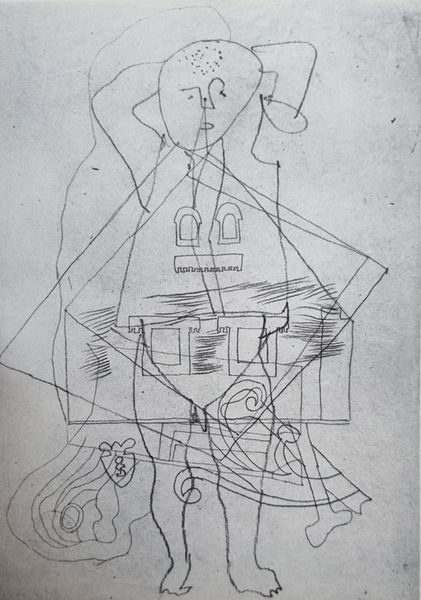
drawing, paper, ink
#
drawing
#
sketch
#
landscape
#
paper
#
ink
#
geometric
#
abstraction
Copyright: Public domain
Curator: Looking at this, I see haunted geometry, a house distilled to its most severe, almost frightened angles. Editor: And those lines feel deliberately uncertain, like someone tracing a memory through fog. This is Vajda Lajos’s “Hegyes Tetejű Ház,” a drawing from 1935 done with ink on paper. The title translates to “Pointy-roofed House,” which seems…remarkably literal for something so evocative. Curator: True, yet within that simple label, it also gives you such stark imagery of shelter exposed. What I find intriguing is that these sharp lines have more of a lasting emotional resonance in one’s head than even the most beautifully rendered landscapes do. What are the primal emotions associated with sharp roofs do you think? Editor: Well, culturally, a roof signifies protection, the boundaries of home, of family. This pointy roof, however, violates that; it feels less like shelter and more like a menacing spire. Look how the windows are blank, and those clusters of dots – they're less like nature and more like an encroaching sense of unease. Maybe the image recalls times when people actually looked for shelter for something beyond weather conditions. The bare trees perhaps reflect a time when everything was dry and infertile as a desert? Curator: Exactly! It becomes an image of exposure, of vulnerability. I like the house beside it being comparatively stable, which gives an unnerving context, too. But then that broken structure in the forefront makes you wonder—was this a stable structure that degraded because of weather? Or perhaps time, if there ever was any, standing still to cause a landscape to be drawn in only one plane. It evokes a time that perhaps stands at both once and never. Editor: It's about creating an architecture of feeling more than an accurate landscape. Perhaps Lajos’ way of creating this landscape allows us to explore not what houses or landscapes mean today, but what primal concepts related to home really can stand to represent—the ability to persevere and transcend is not often associated with home. This feels strangely spiritual. Curator: I agree, it bypasses the literal and burrows straight into the collective unconscious, like architecture becoming an anxious symbol. Editor: Right, I now realize it’s an attempt to see not just with the eye but with a deep inner-visceral understanding—in this light, these dark geometrical strokes give insight on a way of preserving a shared landscape.
Comments
No comments
Be the first to comment and join the conversation on the ultimate creative platform.


